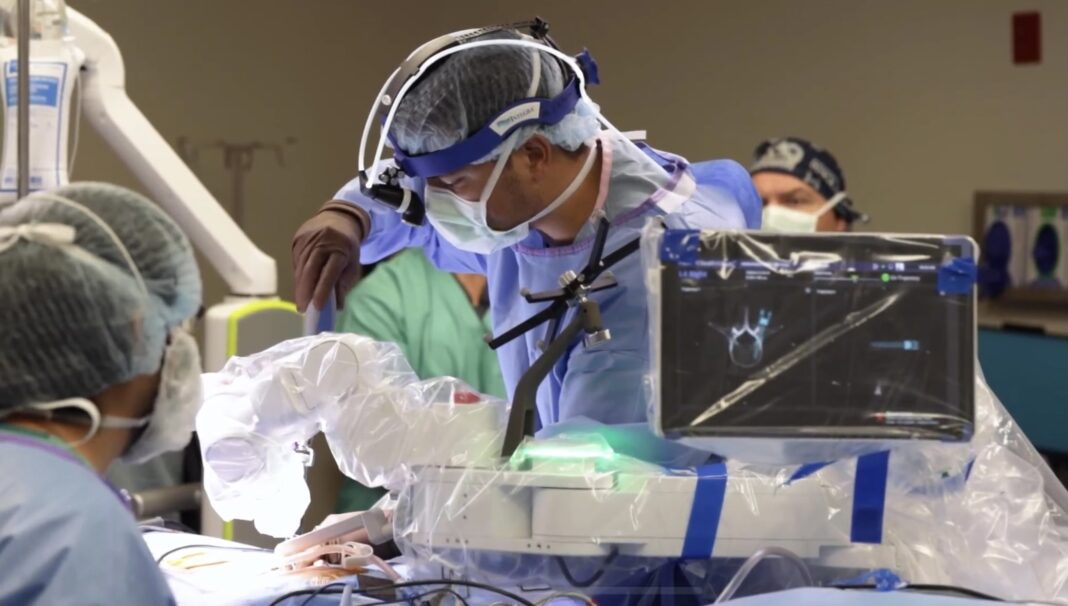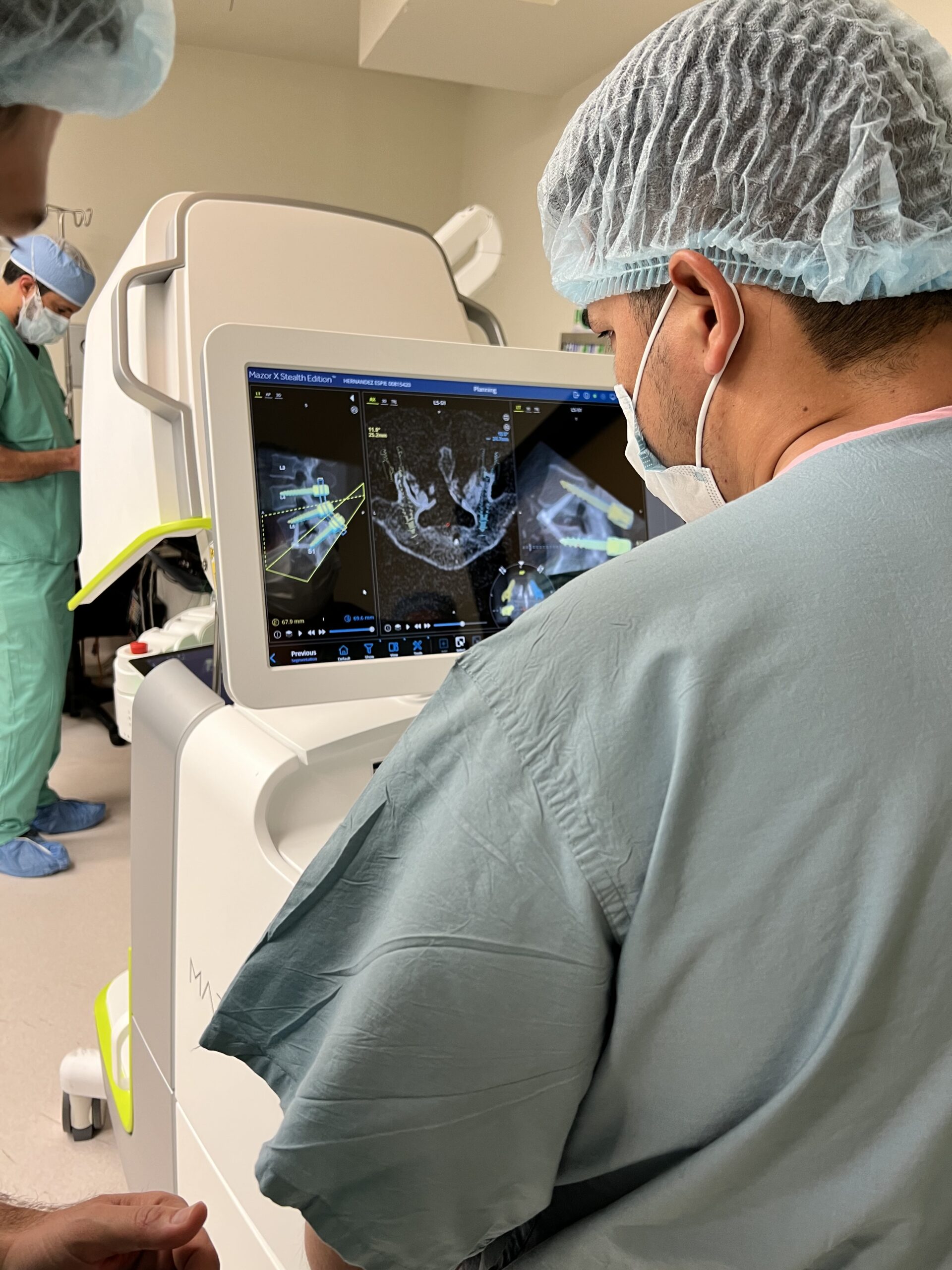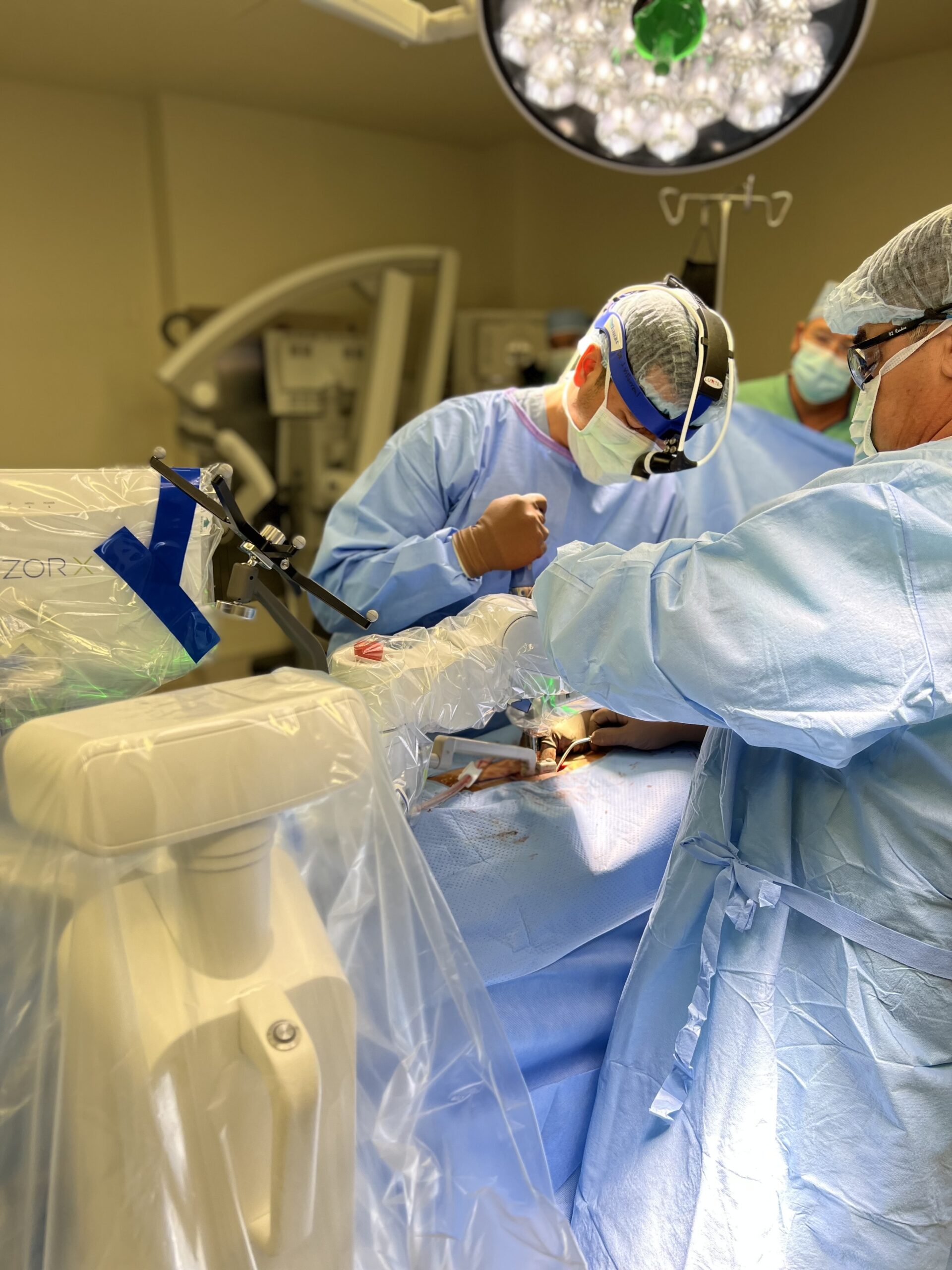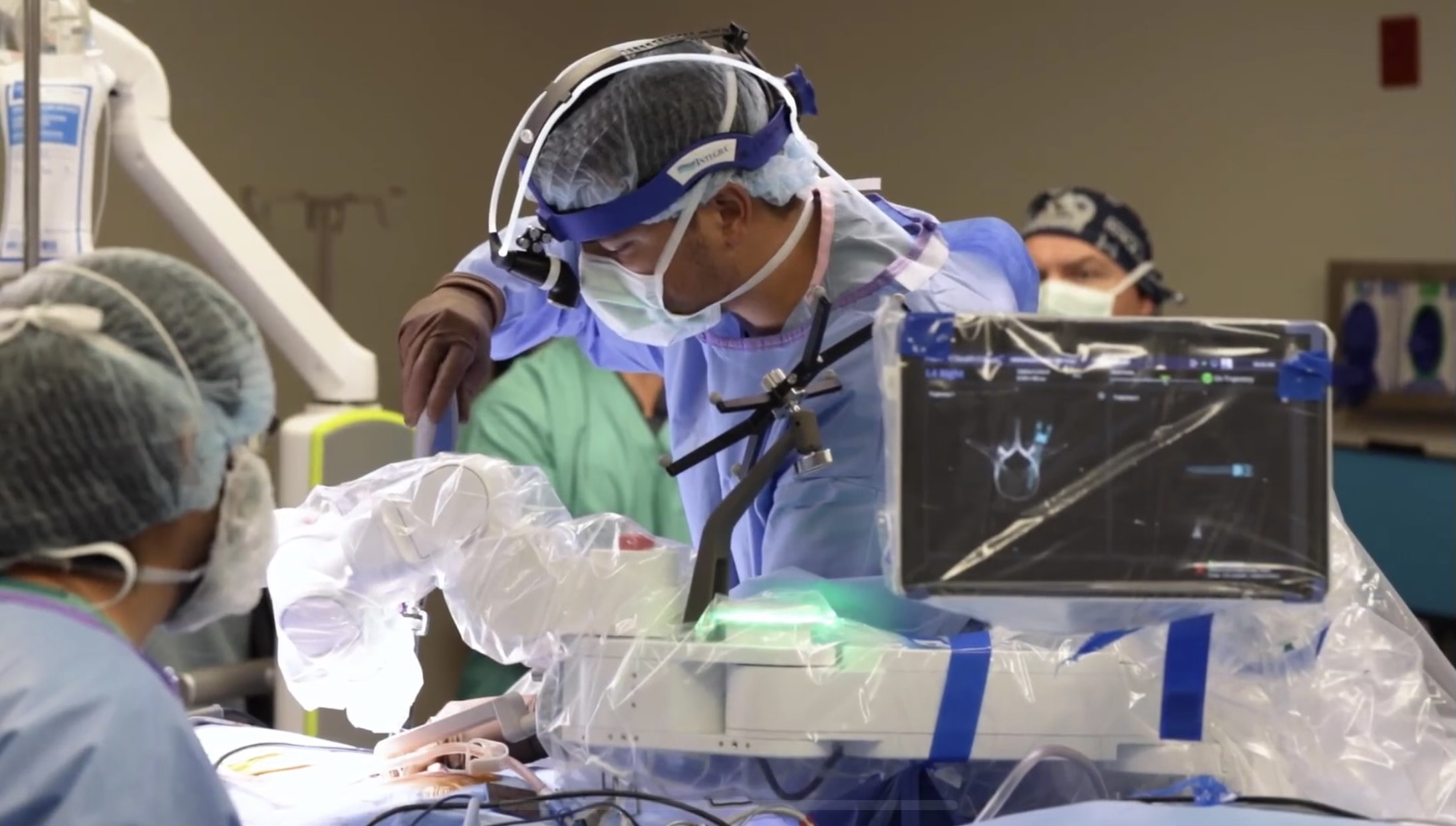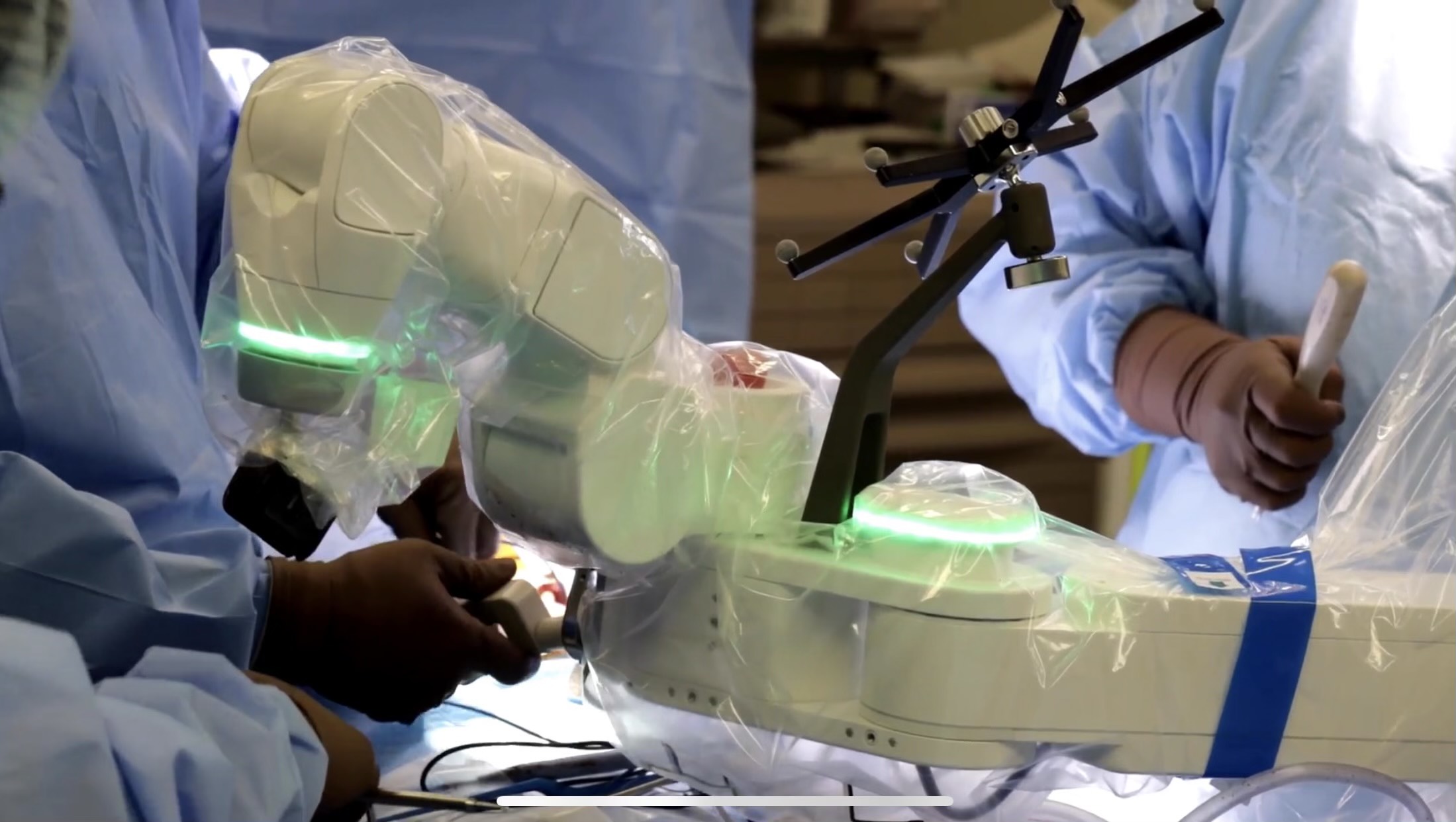History was made at DHR Health this week.
Dr. Jaime Villarreal, an orthopedic surgeon who is fellowship trained in spinal surgery, successfully completed a robotic spinal surgery Monday, a first for the Rio Grande Valley, according to the Edinburg hospital system.
“A large percentage of spine surgeries involve instrumentation because due to degenerative processes, trauma, infection, tumor — the spine can get unstable,” Villarreal said. “That means that it lacks the stability to sustain your weight, producing pain and weakness that can result in a patient not mobilizing well.”
Villarreal explained that instrumentation usually involves the placement of screws. This type of operation helps to achieve fusion and return stability to the spine.
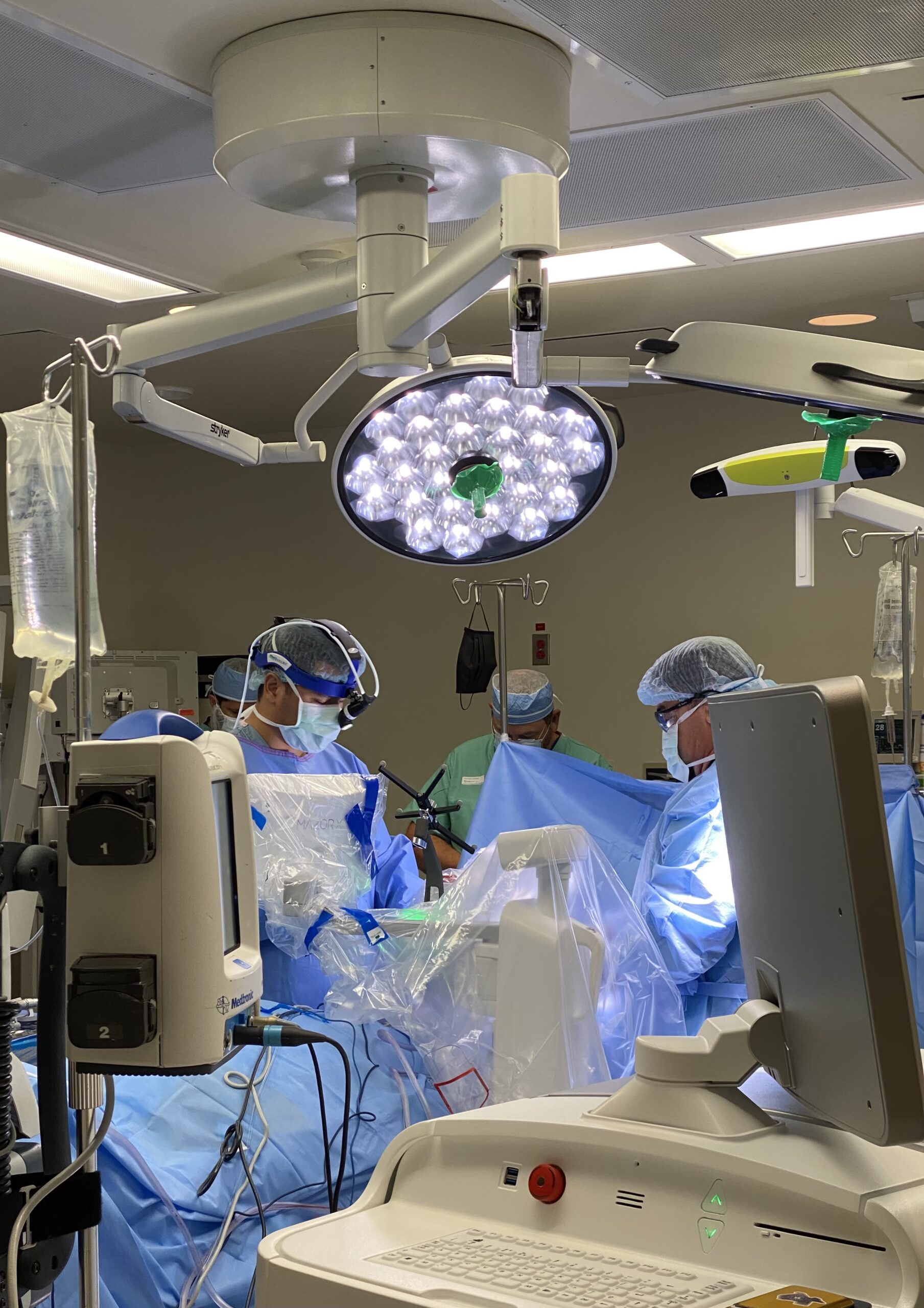
Monday’s surgery involved repairs made to the last three vertebrae in the patient’s back, L3, L4, L5 and S1. The patient suffered from spinal stenosis, or pinching of the nerves, as well as spondylolisthesis, or instability in the spine.
In the past, this procedure has been done free-hand. Through the advancement of technology, surgeons are able to use computer navigation to help place the screws in a much safer capacity. Now, surgeons are able to take another step forward with the introduction of robotic assisted spinal surgery.
Villarreal said that this process is much safer, faster and more efficient.
“The technology that we used (Monday) at DHR is called the Mazor X robot, and it’s developed by Medtronic,” Villarreal said. “It was the first FDA approved robot for spinal surgery. It is a more accurate, safer way to put in screws. The accuracy of the screw placement is close to 98%, 99% versus free-hand, which is closer to the high 80s.”
According to Villarreal, free-hand spinal surgery usually results in screws having to be replaced due to inaccuracy. This can result in pain for the patients.
“The significance of the robot is that it’s being used in more and more hospitals in the U.S.,” Villarreal said. “In the Valley, this was the first time we’ve used this robot for a spinal procedure.”
Villarreal said that there are other robots used for other types of surgeries at DHR, but this technology represents the first of its kind for spinal surgery in South Texas.
The Mazor X guides the surgeon as the screws are placed anatomically. Villarreal said that the robot gives surgeons an opportunity to place the screws more accurately. This is beneficial to patients who may suffer from certain deformities such as scoliosis and kyphosis, as well as people who experience trauma.
Surgeons are now able to do a scan of the patient preoperatively and plan the surgery using the software that comes with the Mazor X.
“The robot can execute the placement of the instrumentation that will lead to the eventual remedy for the deformity,” Villarreal said. “It will correct the deformity. We can do this all preoperatively, and then just execute the plan. It will be a plan that is executed with the most accurate technology that we have thus far.”
Villarreal said that he was excited going into Monday’s surgery. He said that it being the first in the Valley added to his excitement.
As for the patient, Villarreal said that she was excited as well. He said that the woman was up and walking around as early as Tuesday.
“She’s smiling,” Villarreal said. “Obviously, there were no complications. The screws were placed perfectly according to the preoperative plan that we made. I was proud that the hospital could have cutting edge technology like this. It really is a leap for people that end up getting back surgery that requires instrumentation, having this option available.”

